EU designs update
Bird & Bird has once again selected the latest EU design cases that deserve attention

With thanks to Patricia Collis, Heather Randles and Lauren Kourie, who co-ordinated these reports
Belgium
Avoid the pitfalls of successive registrations
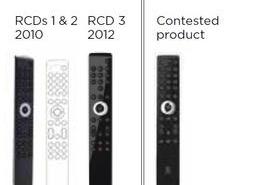
In its judgment of 30th August 2019, the Brussels Court of Appeal considered that Telenet and its supplier Universal Electronics did not infringe the registered Community designs (RCDs) asserted by FM Marketing (FM) and Ruwido Austria.
FM, the owner of a series of consecutive designs, brought an infringement action in Belgium against Telenet’s remote control.
However, Telenet and its supplier Universal Electronics managed to escape a finding of infringement by “squeezing” the scope of protection of the asserted designs against each other.
First, the Court held that since RCD 3 had not been challenged, it could be assumed to be valid and must therefore convey a different overall impression than the design corpus, including FM’s own earlier RCDs, 1 and 2. Later, this finding on the overall impression of the respective RCDs would help to determine the Court’s assessment of whether the contested product infringed the asserted RCDs.
Indeed, the Court concluded that since the contested product differed even more from RCDs 1 and 2 than RCDs 1 and 2 differed from RCD 3, the contested product must therefore convey a different overall impression than RCDs 1 and 2. As a result, the Court held that the contested product fell outside the scope of protection of RCDs 1 and 2. Applying similar reasoning based on a comparison between FM’s respective RCDs, the Court ruled that the contested product did not infringe RCD 3.
This judgment is important because it illustrates some of the pitfalls of registering designs that differ from earlier designs in a seemingly minor way. Although the Court’s motivation may be subject to critique, designers ought to be wary about the additional arguments that third parties may seek to derive from their own design filing strategy.
A bumpy ride for FUN

In a case between Smart Trike MNF PTE (Smart Trike) and FUN Belgium (FUN), the Brussels Court of Appeal confirmed on 17th December 2019 that FUN had infringed Smart Trike’s RCD No. 788666-0001 for tricycles.
In reaching that conclusion, the Court rejected FUN’s argument that the similarities between the RCD and the contested product were dictated by the function and purpose of the tricycle and that these features should not be taken into account when determining the overall impression of the RCD.
Applying the CJEU’s teaching in Doceram, the Court found that the features of the RCD were not exclusively dictated by any technical function. Taking into account that Smart Trike had secured design awards and demonstrated the existence of alternative designs for the same product that did convey a different overall impression, the Court concluded that technical functionality cannot have been the only factor determining the design at issue. Rather, it found that “considerations of a visual nature have played a part in the design of the RCD” and that Smart Trike “sought a balance between design, functionality and safety”.
Despite FUN’s argument that the contested product showed over a dozen differences from the RCD, and even though it appeared that Smart Trike had been unsuccessful in earlier legal proceedings before courts in France and Germany, the Brussels Court concluded that FUN had infringed Smart Trike’s RCD.
Instrumental in reaching this conclusion were the Court’s findings: (i) that there was a considerable difference between the RCD and the design corpus, such that the RCD conveyed a strong individual character, and; (ii) that the disputed product shared six out of the seven features which, according to the Court’s findings, distinguished the RCD from that design corpus.
As a result, the Court held that small differences do not prevent the contested product and the RCD conveying a similar overall impression and confirmed the lower court’s finding that the contested product infringed the RCD.
Reports by Domien Op de Beeck and Alizée Jolie
Denmark
Flower escapes scot-free

The issue in case BS-10241/2017-SHR, brought on 13th October 2017 at the Maritime and Commercial Court, was whether the baby play mats named “Piece of Heaven” and “Soft Shell” and marketed by Mette Neerup Mariager (trading as That’s Mine) are protected as Community designs, and if so, whether Anne-Lise Jensen (trading as KidKii) and Mateusz Skiba (trading as Misioo) infringed the Plaintiff’s rights under the Community Design Regulation (CDR) and the Danish Marketing Practices Act by marketing and selling the play mats named “Flower”.
After a trial in December 2019, the Court ruled earlier this year that the Plaintiff’s play mats “Piece of Heaven” and “Soft Shell” were unregistered Community designs.
However, the Defendants’ play mat “Flower” was not found to be so similar as to trigger a
violation of either the Plaintiff’s design under the CDR or of the Plaintiff’s rights under the Danish Marketing Practices Act.
Report by Mogens Dyhr Vestergaard
Finland
Daimler drives ahead

The Finnish Market Court has ruled in decision MAO:445/19 (14th October 2019) that certain local Finnish defendant companies had infringed Daimler AG’s trade mark and design rights.
The Market Court examined both national and EU-level design legislation in its decision. The conclusion was that sales of the rims/wheels mentioned in the claim had infringed Daimler’s RCD (No. 691902-0002), as a well-informed user would find the two products practically identical, despite slight differences. Therefore, the infringing wheel and Daimler’s RCD would give a similar overall impression, even to the well-informed user.
After concluding that the Finnish Defendants had infringed Daimler’s RCD, the Court assessed the applicability of the so-called spare part exception referred to in Article 110 of the CDR. For the exception to apply, the Defendants must act in accordance with a duty of care.
As it could not be shown that the Defendants had necessarily acted in accordance with a duty of care in the sale of the wheels, the exception did not apply. Further, the Court concluded that the Defendants had also infringed six other Daimler RCDs and ordered all infringing products in the Defendants’ possession to be destroyed.
The Market Court also addressed national and EU-level trade mark legislation and concluded that the actions of the Defendants had contravened existing national and European trade mark rules.
Finally, a number of important procedural questions, such as questions on joint liability and identification, were also dealt with in this definitive decision.
Report by Ella Mikkola
France
Repair clause goes back to square one
In a decision rendered on 20th December 2019 (No. 2019-794 DC), the French Constitutional Council declared that the adoption of Article 110 of Statute Law No. 2019-1428 (the Loi d’Orientation des Mobilités, or LOM) had not been carried out in a constitutional manner and should therefore be considered unconstitutional.
Article 110 was the most recent attempt to introduce into French law a repair clause aimed at limiting or paralysing both the effects of copyright and the registration of French designs relating to parts for vehicles or trailers where they may be used to repair a complex product and restore its original appearance.
Article 110 provided for a substantial reduction in the protection of spare parts needed to repair a vehicle. In copyright law, it introduced a new exception for such spare parts to prohibit the author from objecting to the reproduction, use and marketing of their work. In terms of design law, it was foreseen that this would reduce the protection for certain parts in both duration and scope.
The principle of the repair clause is a point on which EuropeanDirective No. 98/71 was never able to reach agreement. In order for the Directive to be adopted, transitional provisions were passed with regard to this exception (Article 14).
It is well known that this exception to design law is controversial, particularly within the automobile sector. EU Member States have therefore applied heterogeneous solutions. Until now, the introduction of a repair clause into French law had been discussed on several occasions at a legislative level and in each case rejected.
For the time being, in France, the rights of holders of French national designs relating to vehicle spare parts are not limited by a repair clause, as illustrated by two recent judgments on this subject handed down by the Paris Court of Appeal and the Colmar Court of Appeal on 22nd October 2019 and 18th September 2019 respectively (CA Paris, docket No. 17/18729, Volkswagen AG v Jumasa Parts SI, Spact SARL and Depo Auto Parts Industrial Co. Ltd; CA Colmar, docket No. 16/04036, Dr. Ing. HCF Porsche AG v Ultragroup SARL and Acacia Srl).
The outcomes would certainly have been different in these cases had the rightholders relied upon Community designs, since the CDR provides for a repair clause under its own Article 110 (as interpreted by the CJEU in joint cases C-397/16 and C-435/16, 20th December 2017).
Article 110 LOM was censured by the French Constitutional Council, considering that the procedure followed to adopt this article, by way of amendment, was contrary to Article 45 of the French Constitution, in that it was not linked to the provisions contained in the bill on mobility.
If the reason for the rejection stemmed from the legislative procedure and not from the substance, the debate could be relaunched on the future of the repair clause in French law. There is nothing to prevent the French Government from proposing the adoption of a new bill.
Report by Benoît Lafourcade and Géraldine Arbant
Germany
CJEU to ponder Ferrari question

In a case concerning the V-shaped “front kit” of one of Ferrari’s top car models, the Ferrari FXX-K, the German Federal Court of Justice (30th January 2020, court ref. I ZR 1/19) has referred a question to the CJEU for a preliminary ruling. The question is whether the disclosure of an overall representation of a product under Article 11(1) and (2) of the CDR can give rise to an unregistered Community design right (UCD) in respect of individual component parts of the product.
At the Geneva Motor Show in 2016, a manufacturer of tuning components for Ferrari cars presented a converted Ferrari 488 GTB under the designation “Mansory Siracusa 4XX”, in which a V-shaped add-on front kit was used. Ferrari was of the opinion that the V-shaped add-on front kit infringed a UCD in its favour. The Higher Regional Court of Düsseldorf (6th December 2018, court ref. I-20 U 124/17) rejected Ferrari’s claim.
That decision by the Higher Regional Court of Düsseldorf was later assigned to the German
Federal Court of Justice, which has now referred the case to the CJEU, asking whether part of the body of a vehicle, interpreted as a component part of a complex product, can be granted protection as a UCD, and if so, under what conditions. In particular, the question is whether the component part needs to have a certain degree of “autonomy and unity of form” which, in the perception of the informed user, makes it possible to establish an overall aesthetic impression of it independent of the overall form.
Slide decision sorted?
The Higher Regional Court of Düsseldorf (25th April 2019, court ref. I-20 U 103/18) dealt with a case about a slide sandal, which the Plaintiff had designed together with the well-known singer and businesswoman Rihanna. The shoe was exhibited for the first time at
a major fashion show in September 2016. The Plaintiff then filed an application for an RCD for the shoe some seven months later, in April 2017. The Defendant distributed a similar sandal in Germany, so the Plaintiff filed for a preliminary injunction (PI).
As various third parties had disclosed slide sandals with similar distinctive features during the period between the first presentation of the slide sandal in September 2016 and the RCD application in April 2017, the Defendant argued that the Plaintiff’s RCD was void. The Higher Regional Court of Düsseldorf upheld the PI and stated not only that the first disclosure of a design falls under Article 7 of the CDR, but that so do any subsequent disclosures too, provided that they are not independent parallel creations.
Article 7(2) is intended to give the designer an opportunity to test their design on the market before applying for an IP right. It would be contrary to this if only the first publication by the designer came under Article 7(2) but no subsequent third-party disclosures based on it, since these third-party disclosures are then “a result of… action taken by the designer” according to the terms of Article 7(2).
Even so, this decision is broadly advantageous for owners of an RCD. If third-party disclosures only fall under Article 7(3), the owner of the RCD would then have the burden of proof when it came to showing abusive behaviour by a third party.
Reports by Roman Brtka
Hungary
Talkin’ ’bout the car wash

In proceedings related to a car-washing structure, the Metropolitan Appeal Court of Budapest, acting as the second-instance Community design court, confirmed the relevant criteria for intermediary liability for design infringement.
The subject of the case was an international design (shown below) designated in the EU and relating to a multi-stop car-washing structure with a feature that creates a sinking impression. The Court was required to consider whether the locksmithing company that manufactured, assembled and built the structure was directly liable for design infringement under Article 19 of the CDR or whether it is considered an intermediary under Article 11 of the IP Enforcement Directive and the transposing national law.
The Metropolitan Appeal Court confirmed that despite previous Hungarian case law (Szoláriumcső), a CJEU decision (C-119/10, Frisdranken v Red Bull GmbH) and commentary on the CDR referred to by the rights holder, manufacturing and building a structure subject to protection does not necessarily result in direct liability.

This decision is notable because the Court adopted an “exploitation-focused” approach to identifying: (i) the infringer/user; and (ii) the person simply providing services that are used by a third party to infringe an IP right. This distinction was also evident in the Red Bull case, where a person who merely creates the technical conditions necessary for third parties to use the product subject to protection (ie, the intermediary) was distinguished from the actual infringer. The circumstances of each case must be assessed to determine whether there is room for such a distinction.
In this case, the Court paid special attention to the fact that:
- the parameters of the structure, the technical plans and the place of assembly were clearly instructed by a third party;
- the locksmithing company had no influence over or interest in the specific look of the structure;
- the product (ie, the structure) was not mass-produced by the Defendant;
- the product did not enter the distribution and supply chain on the market; and
- the rights of the holder were not principally compromised by the manufacturing and assembly of the structure (but by the actual use of the structure being identical to the design by a third party).
Consequently, the Defendant was not identified as the unlawful user of the design in the sense of Article 19 of the CDR and was not liable for infringement. However, it was prevented from providing services for design infringement as per the Hungarian Design and Patent Acts.
This means that the fact that a manufacturer has no knowledge of the design, no influence over the structure and no interest in the look of the structure does not give them a free pass; additional factors in the case at hand must also be considered.
Report by Bettina Kövecses
Italy
Store layouts gain protected status

The Italian Supreme Court has had the opportunity to confirm whether store layouts are protected under copyright law and to define the scope of that protection.
In 2013, Kiko brought an action against its competitor Wycon Cosmetics, claiming that the latter had infringed its exclusive rights to its store layout, characterised by: an open entrance with two large graphic backlit panels at the side; an interior made up of side stands composed of a sole structure sloping along the walls, self-standing central stands with curved edges and numerous TV screens built into the sloping stands; use of the same combination of colours ( black, white and pink/purple); and cold lighting.
The matter referred to the Court was the possibility of protecting Kiko’s store layout as an architectural work pursuant to Article 2(5) of Italian Copyright Law. Generally speaking, the Court confirmed that a work of interior design, in which there is a unitary structure that reveals its own stylistic key or the personal mark of the author can be protected as an architectural work regardless of the requirement of the inseparable incorporation of the furniture elements with the building.
As to this specific case, the Supreme Court judges upheld a decision by the Appeal Court of Milan and confirmed that Kiko’s store layout was protectable as the subject of an interior design project consisting of creative choice, co-ordination and organisation of elements within a unitary design and style.
In this regard, the Supreme Court also found it irrelevant that the individual furnishing pieces making up the project were simple or common. On the contrary, the original combination of components by the author, aimed at making the entire environment more functional, was held to be relevant.
Having confirmed that Kiko’s store layout was protectable, the Supreme Court confirmed the appropriateness of the Court of Appeal’s conclusion that Wycon’s store layout amounted to infringement. Following this decision, there is a good chance of arguing that store layouts are protectable in Italy, not just as registered trade marks (as held by the CJEU in the famous case of Apple’s flagship stores, C-421/2013), but also as architectural works.
Ferrari 250 GTO gets copyright cover

In a decision issued on 20th June 2019 (docket No. 3973/2019), the Court of Bologna elevated the Ferrari 250 GTO to a work of industrial design deserving copyright protection under Article 2(10) of Italian Copyright Law.
The order followed preliminary injunction proceedings brought by Ferrari against another Italian company that announced plans to produce “modern replicas” of the most expensive classic car on the market. Ferrari claimed that the replicas infringed its copyright in the iconic 250 GTO design (as well as its relevant 3D trade mark).
According to the Court, which fully reversed the first-instance order, the Ferrari 250 GTO meets the requirements of “creative character” and “artistic value” necessary – until the recent ruling in Cofemel – for an industrial design product to be protected as a work of art.
In fact, the originality of the design in question and, in particular, the creative personalisation of its aesthetic elements has made the Ferrari 250 GTO a unique example in the automotive sector. Further, the recognition of the Ferrari 250 GTO design in numerous official awards, publications and exhibitions, together with the large price tag, clearly demonstrate its artistic value.
The Court then confirmed that the reproduction of a work of industrial design, having creative character and artistic value, constitutes copyright infringement if, despite any differences between the original work and the contested product, the latter takes over the individualising characteristics of the protected design. In a nutshell, the defending party has then reproduced exactly those creative and artistic shapes that allow the Ferrari 250 GTO to access copyright protection.
Classic Vespas also gain protection
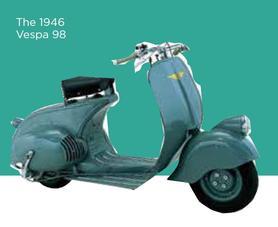
In 2014, two Chinese companies brought an action against Piaggio, requesting that the Court of Turin declare that their scooters did not infringe Piaggio’s rights in the Vespa and that the 3D trade mark portraying the Vespa was void.
In decision No. 1900/2017, the Court of Turin not only recognised the validity and infringement of the Vespa 3D trade mark, but also, through an ex post assessment of the additional requirement of “artistic value” (based on its collective recognition by the cultural world), that the shape of the 1945/1946 Vespa and its subsequent elaborations are works of industrial design deserving copyright protection pursuant to Article 2(10) of Italian Copyright Law.
Following an appeal by the Chinese companies, in decision No. 677/2019 (16th April 2019), the Court of Appeals of Turin confirmed that the 1945/1946 Vespa is a work of industrial design deserving copyright protection. As such, although not a requirement, the collective recognition by the cultural world of the artistic value of the work is a proof that this design deserves copyright protection.
The Court also confirmed that copyright protection extends to the design’s subsequent elaborations, as “the object of protection must be identified… with reference to the ‘historic’ Vespa model and thus to the models recognised as its direct emanation”. Further, it offered clarification as to the grounds under which copyright also protects the elaborations of the original work, as deduced from Articles 12(2), 18(2) and 4 of Italian Copyright Law.
Reports by Francesca Rombolà, Cristiana Andreotta and Valeria Meli
Netherlands
Two-pronged attack now possible
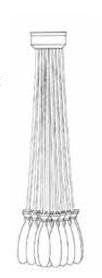
Filing a cancellation proceeding at the EUIPO is often a defendant’s first step in countering an allegation of RCD infringement. But what if the defendant wants to get on with business without waiting until all legal remedies at the EUIPO have been exhausted?
The Hague Court of Appeal’s decision in Tinnus Enterprises (27th August 2019) shows that while a cancellation proceeding is pending at the EUIPO, it is possible to get a declaration of non-infringement from a national court without the need to suspend proceedings under Article 91(1) of the CDR. After all, according to Article 84(4), invalidity may not be disputed in an action for a declaration of non-infringement.
This offers defendants the possibility of a two-pronged approach: a cancellation action at the EUIPO and a discussion on the scope of protection in front of a national court as part of a separate action for a declaration of non-infringement. The rights holder, on the other hand, can only get a preliminary injunction, as the national court will have to suspend any proceedings regarding permanent injunctions or declarations of infringement while the EUIPO cancellation proceeding is still pending.
Appeal court rules on crisps conflict
In the long-running cross-jurisdictional dispute between JR Simplot and McCain over curly crisps, The Hague Court of Appeal has held JR Simplot’s RCD to be valid and infringed.
In its preliminary injunction decision of 21st May 2019, the Court denied McCain’s claim that the RCD’s pictures were unclear or inconsistent and concluded that the RCD was novel and had individual character compared with the “crisp” prior art.
The Court refused McCain’s argument that the designer’s freedom would be limited by technical requirements, and instead decided that given the variety of crisp shapes on the market, the designer had a considerable amount of freedom. Later that year, the EUIPO Board similarly considered the RCD valid.
As a last resort, McCain pointed out that JR Simplot didn’t market the curly crisps covered by the RCD in the EU itself. However, the Court concluded that it is not necessary for the rightholder to use the RCD on the EU market in order to obtain an injunction.
Reports by Manon Rieger-Jansen and Nina Dorenbosch
Poland
Making hay

HAYKA is a brand created by Polish design studio FOONKA. The brand is protected by a Community design registered under RCD No. 5663481-0001 in Locarno Classification class 06-13 (bed sheets, duvet covers, cot bed linen, bed linen, cushion covers).
In 2019, HAYKA applied to the District Court of Warsaw (the Court) for a preliminary injunction against a Polish entrepreneur (the Respondent) who had placed textile products on the market intended for dog owners, such as beds and mattresses featuring hay and meadow patterns.

In a ruling on 29th April 2019 (court ref. XXII GWo 29/19), the Court supported HAYKA’s claims in line with the Act on Combating Unfair Competition. Nevertheless, in respect of the infringement of the Community design, the Court dismissed the claims.
In the Court’s view, according to Article 3(2) of the CDR, the indication of the products in which the design will be incorporated excluded protection of the patterns. The rectangular shape of a duvet cover and pillowcases is solely dictated by its function, the Court argued.
As such, the Court found that the distinctive character of HAYKA’s design covered only the pattern depicting specific plants and colour combinations and not the concept of representing a meadow on a fabric.
The Court then ruled that the overall impression made by HAYKA on an informed user differs from the impression made by the Respondent’s products. The idea of a meadow on fabric was not sufficient to be considered similar due to the variety of plants and colours presented.
At the time of writing, the Court has not yet issued its final ruling.
Casting a light on candles
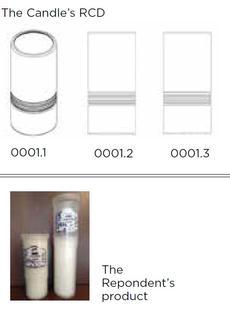
Masterplast, a specialist in plastic processing, holds the Community design registered under RCD No. 3123256-0001, presenting a candle in three projections (the Candle).
As shown in the design, the Candle consists of two components: a thin-walled base part containing a pot, and a tube that slides over the top. By increasing or reducing the depth of the overlap, it is possible to adjust the height of the container.
Masterplast applied to the District Court of Warsaw (the Court) for a preliminary injunction against a Polish entrepreneur (the Respondent) who had placed containers on the market for candles varying in size but with identical operation, shape and geometry. In the ruling on 14th October 2019 (court ref. XXII GWo 87/19), the Court stated that the Candle’s appearance to some extent is dictated by its technical function.
In the Court’s view, even though the designer’s freedom is limited to a certain extent, the functionality of the product does not require the adoption of an identical arrangement of lines, layout and proportions in relation to the individual elements.
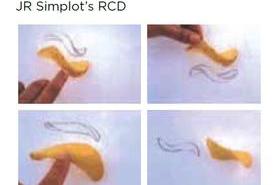
From the informed user’s perspective – someone frequently visiting cemeteries and lighting candles – the design incorporated in the Respondent’s product is similar to the Community design registered by Masterplast. The overall impression is determined in both cases by the simple shape of the container, the arrangement of lines and hollows, and the lack of ornaments or colour contrasts. The similarity is all the more evident when directly comparing the Candle and the Respondent’s product.
Under these circumstances, the Court granted Masterplast an injunction. At the time of writing, the Court has not yet issued its final ruling.
Reports by Ewa Kindel-Kaluzna







